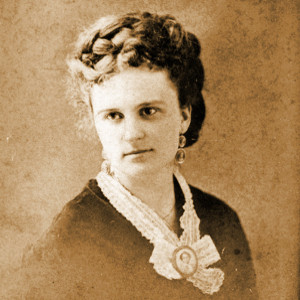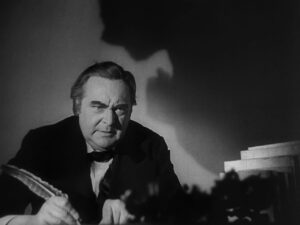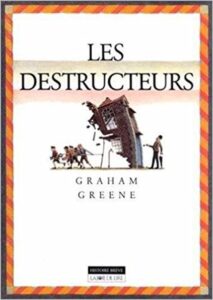The Story of an Hour – Kate Chopin
“The Story of an Hour” is a short story which has been penned by Kate Chopin, an American author in the late 1800s. The story was penned in 1894 and was published in December that year. The story was again reprinted to a larger audience in January 1895.

The Story of an Hour follows a very simple story line where the protagonist, a wife Louise Mallard, receives the news that her husband passed away in a railroad disaster. She then goes through a rollercoaster of emotions, many of which were considered highly controversial in the 1890s by American standards. The author Kate Chopin would later become very famous for the novel The Awakening which would get published in 1899.
This story is included into the high school curriculum of the USA and is read by hundreds of thousands of children across the world. You can download a free PDF copy of “The Story of an Hour” right below and also download a worksheet with many questions and answers.
Table of contents – The Story of an Hour
- The Story of an Hour Story
- Plot, Summary and Analysis – The Story of an Hour
- Questions and Answers – The Story of an Hour
- The Story of an Hour – Worksheets PDF
- The Story of an Hour – PDF
- The Story of an Hour – Analysis PDF
Other famous short stories which you can read
- The steadfast tin soldier
- Lamb to the slaughter
- The little match girl
- The goblin and the grocers
- The handsomest drowned man in the world
- The princess and the pea
Death and despair
Knowing that Mrs. Mallard was afflicted with a heart trouble, great care was taken to break to her as gently as possible the news of her husband’s death.
It was her sister Josephine who told her, in broken sentences; veiled hints that revealed in half concealing. Her husband’s friend Richards was there, too, near her. It was he who had been in the newspaper office when intelligence of the railroad disaster was received, with Brently Mallard’s name leading the list of “killed.”
He had only taken the time to assure himself of its truth by a second telegram, and had hastened to forestall any less careful, less tender friend in bearing the sad message.

She did not hear the story as many women have heard the same, with a paralyzed inability to accept its significance. She wept at once, with sudden, wild abandonment, in her sister’s arms. When The Story of an Hour of grief had spent itself she went away to her room alone. She would have no one follow her.
There stood, facing the open window, a comfortable, roomy armchair. Into this she sank, pressed down by a physical exhaustion that haunted her body and seemed to reach into her soul.
She could see in the open square before her house the tops of trees that were all aquiver with the new spring life. The delicious breath of rain was in the air.
In the street below a peddler was crying his wares. The notes of a distant song which someone was singing reached her faintly, and countless sparrows were twittering in the eaves. There were patches of blue sky showing here and there through the clouds that had met and piled one above the other in the west facing her window.
A free body and soul
She sat with her head thrown back upon the cushion of the chair, quite motionless, except when a sob came up into her throat and shook her, as a child who has cried itself to sleep continues to sob in its dreams.
She was young, with a fair, calm face, whose lines bespoke repression and even a certain strength. But now there was a dull stare in her eyes, whose gaze was fixed away off yonder on one of those patches of blue sky. It was not a glance of reflection, but rather indicated a suspension of intelligent thought.
There was something coming to her and she was waiting for it, fearfully. What was it? She did not know; it was too subtle and elusive to name. But she felt it, creeping out of the sky, reaching toward her through the sounds, the scents, the color that filled the air.
Now her bosom rose and fell tumultuously. She was beginning to recognize this thing that was approaching to possess her, and she was striving to beat it back with her will — as powerless as her two white slender hands would have been. When she abandoned herself a little whispered word escaped her slightly parted lips. She said it over and over under her breath: “free, free, free!”
The vacant stare and the look of terror that had followed it went from her eyes. They stayed keen and bright. Her pulses beat fast, and the coursing blood warmed and relaxed every inch of her body. She did not stop to ask if it were or were not a monstrous joy that held her. A clear and exalted perception enabled her to dismiss the suggestion as trivial.
She knew that she would weep again when she saw the kind, tender hands folded in death; the face that had never looked save with love upon her, fixed and gray and dead. But she saw beyond that bitter moment a long procession of years to come that would belong to her absolutely. And she opened and spread her arms out to them in welcome.
There would be no one to live for her during those coming years; she would live for herself. There would be no powerful will bending hers in that blind persistence with which men and women believe they have a right to impose a private will upon a fellow-creature.
A kind intention or a cruel intention made the act seem no less a crime as she looked upon it in that brief moment of illumination.
And yet she had loved him — sometimes. Often she had not. What did it matter! What could love, the unsolved mystery, count for in face of this possession of self-assertion which she suddenly recognized as the strongest impulse of her being!
“Free! Body and soul free!” she kept whispering.
The Story of an Hour
Josephine was kneeling before the closed door with her lips to the keyhole, imploring for admission. “Louise, open the door! I beg, open the door — you will make yourself ill. What are you doing, Louise? For heaven’s sake open the door.”
“Go away. I am not making myself ill.” No; she was drinking in a very elixir of life through that open window. Her fancy was running riot along those days ahead of her. Spring days, and summer days, and all sorts of days that would be her own. She breathed a quick prayer that life might be long. It was only yesterday she had thought with a shudder that life might be long.
She arose at length and opened the door to her sister’s importunities. There was a feverish triumph in her eyes, and she carried herself unwittingly like a goddess of Victory. She clasped her sister’s waist, and together they descended the stairs. Richards stood waiting for them at the bottom.
Someone was opening the front door with a latchkey. It was Brently Mallard who entered, a little travel-stained, composedly carrying his grip-sack and umbrella. He had been far from the scene of the accident, and did not even know there had been one. He stood amazed at Josephine’s piercing cry; at Richards’ quick motion to screen him from the view of his wife.
But Richards was too late.
When the doctors came they said she had died of heart disease — of the joy that kills.
Theme and moral of “The Story of an Hour”
The moral of the story “The Story of an Hour” written by Kate Chopin is that “the truth shall set you free”. Mrs. Mallard finds freedom in the false belief that her husband is dead, and dies when she faces the truth. Alternatively the moral is everyone feels joyous in their own freedom, regardless of anything.
The theme of the story is the theme of freedom and independence. In the era of 1800s, women were highly suppressed and independence is a forbidden pleasure that can be imagined only privately. A secondary theme is marriage, suppression of women’s freedom, the relationships between men and women, and personal freedom.
Summary of the Story of an Hour
The story starts off with Mrs. Mallard a wife who has heart trouble. She is gently and carefully given the bad news that her husband had passed away in a train accident.
Mrs. Mallard is broken and weeps wildly and then goes into her room all alone. She is tired and sits in an armchair and looks outside at the spring day, sobbing occasionally.
Suddenly, a thought comes to her head and that makes her afraid. She tries hard to push it back but fails. The though it is that her realization that she is finally free, and relaxes. She knows she’ll be sad at her husband’s funeral, but she looks with hope on all the coming years she’ll have to herself.
She won’t have to consider her husband’s opinion on anything anymore.
Josephine urges Mrs. Mallard, whose name is Louise, to open the door, concerned about her well-being. She stays in her room, her feelings of optimism for the future increasing.
She finally opens the door to her sister. They walk downstairs together with Louise feeling triumphant. Richards stands waiting for them at the bottom.
Mr. Mallard walks through the front door. He hadn’t been at the scene of the accident, and didn’t even know there had been one. Josephine cries out. Richards tries to shield him from his wife’s view.
The doctors say Mrs. Mallard died “of joy that kills.”
Analysis of the Story of an Hour
An analysis of the short story, “The Story of an Hour” reveals that the dives into explaining the woman’s repressive role when married. The protagonist of the story is a house wife Louise Mallard. She ends up feeling freedom and happiness only upon the death of her husband. Only when he dies, she gets to live her life on her own terms.
Repression of women
- The story is one of the shortest written by Kate Chopin and it quickly dives the theme of freedom and repression of women in the 1800s. The whole point of view of the story is as explained from a woman’s perspective. In that era, women were the victims of repression and they were considered as slaves to their husbands
- Until the moment of her husband’s supposed death, Louise does not feel free. The understanding of freedom dawns upon her just hours after her husband’s death showcases to the reader that the wife was indeed repressed or feeling repressed by her husband.
- When she received the news of her husband‘s death, she is initially devastated as she tries to process it. However, soon she begins to realize that she is now truly free. She can make any decision on her own and life in her own terms. She sees that she can live a life of true freedom which was reserved only for men.
- In the end of the story, the wife is shown to be shocked on the return of her husband and then her fragile heart gives away and she passes away. It is inferred that it is the shock of her husband’s return that kills Louise. The author infers that the realization of losing her newly found freedom is what kills her.
Analysis of Louise’s marriage
- The marriage which the protagonist is in no way any different to those faced by women in the 19th
- Marriage was a construct that men enabled to acquire social control of women. Husbands were free to do as they please, to wander the world, work in any kind of job, make important family decisions without consultation.
- Wives of not so affluent families had to work and thus had a better social life than women coming from Affluent families.
- The protagonist realizes upon her husbands’ death that her marriage as nothing short of a life-long servitude.
- The marriage is thus shown as something that is only holding her back from being truly free.
- Interestingly women who were given similar news would be struck in disbelief and would render them in shock. On the other hand, Louise cries with “wild abandonment” showing that she has quickly processed the emotion of death.
- Also another interesting fact is that women of that era would mourn for much longer while Louise though initially is grieving and then transitions into joy as she realizes that she is free.
Questions and Answers – The Story of an Hour – Set 1
- Who are the main characters in The Story of an Hour?
- The main characters in the story are Mrs. Louise Mallard, her husband Mr. Mallard, her sister Josephine and her husband’s friend Richards.
- Who is the protagonist of the story The Story of an Hour?
- The protagonist of the story is Mrs. Louise Mallard who is the wife of Mr. Mallard
- What happened in the start of story The Story of an Hour?
- In the start of the story Mr. Mallard dies and the news is passed on to her.
- What is the theme of The Story of an Hour?
- The theme of the short story is the theme of freedom and the oppression of women because of marriage.
- What is the moral of The Story of an Hour?
- A funny moral of the story could be “Don’t count your chickens before they hatch”.
Questions and Answers – The Story of an Hour – Set 2
- What is the message shared by the author in The Story of an Hour?
- The main message shared by the author Kate Chopin in the short story The Story of an Hour is the woman experiencing freedom on the death of her husband.
- What is The Story of an Hour short story about?
- The Story of an Hour is a short story written by Kate Chopin. In this story, a woman Louise Mallard gets the news that her husband was killed in an accident. She initially grieves and then in a few hours he feeling subsides, she begins to see freedom in her future.
- What is the theme of The Story of an Hour?
- The theme of the story is to showcase the social expectations and oppressions of marriage and domestic responsibility were forms of repression.
- Why is The Story of an Hour controversial when it first came out?
- The story was released in the 1890s and it was considered highly controversial. This was because the female protagonist feels liberated by the news of her husband’s death. The author actually had to reword the story to kill the heroine to make the story publishable.
- What is the irony in The Story of an Hour?
- The irony in the story is that death actually grants freedom for a woman. The price to be paid for freedom is actually death since a woman can only be free when she is dead or her husband is. Initially the death of Mr. Mallard grants freedom to Mrs. Mallard. She is now “allowed” to be free and become who she wants to be. When she finds that her husband is alive, she is shocked and dies in perceived “happiness”. Thus she is finally free.
Questions and Answers – The Story of an Hour – Set 3
- What happens in the end of the story?
- In the end of the story, Mrs. Mallard dies. It is hinted by the author that it is because she is devastated that her husband would gain complete control of her life again. Death thus allows her to keep her new found freedom.
- What was Mrs. Mallard’s cause of death as per the author?
- Even though the people in the story believe that Mrs. Mallard dies of a heart attack, in reality she dies because she was afraid of losing her freedom once more.
- What is symbolic about Mrs. Mallard seeing through the open window?
- The open window represents the world of freedom and opportunities that has opened to Louise after her husband has died. Louise sees blue sky and the fluffy clouds. She is able to hear people and birds singing and smells a coming rainstorm.
- Why was Mrs. Mallard happy her husband died?
- Mallard was very controlling and Mrs. Mallard was never truly free. Upon the death of her husband, Louise feels freedom and joy. Mrs Mallard feels liberated that she can actually start enjoying her life without Mr. Mallard’s interference.
- In the story, does Mrs. Mallard actually love her husband?
- Mallard indeed is heartbroken that her husband had passed away. She was sad and devastated on realising that she would have to be alone. She thus did love her husband.
Set 4 – Questions and Answers – The Story of an Hour
- What is the conclusion line for The Story of an Hour?
- The doctors said that she died of heart disease—of the joy that kills.
- What is the Louise’s health problem in The Story of an Hour?
- Louise Mallard suffers from a heart problem. Thus great care needed to be taken to break the news to her gently.
- What does death symbolize in The Story of an Hour?
- The irony is that death actually symbolizes freedom. The price to be paid for freedom is actually death since a woman can only be free when she is dead or her husband is. Initially the death of Mr. Mallard grants freedom to Mrs. Mallard. She is now “allowed” to be free and become who she wants to be. When she finds that her husband is alive, she is shocked and dies in perceived “happiness”. Thus she is finally free.
- What did the doctors think killed Mrs. Mallard?
- The doctors say that it was the joy and being overwhelmed with emotion from seeing her presumed-dead husband that her heart couldn’t physically handle it.
- Why is Mrs. Mallard’s death situational irony?
- The situational irony is that the whole story runs on Louise being happy upon the death of her husband but the irony is that Mrs. Mallard dies in the end.
The Story of an Hour– Worksheet PDF
You can download a free PDF copy of The Story of an Hour worksheet right below. This has a lot of questions and answers on The Story of an Hour.
The Story of an Hour – Short story – PDF
Are you looking for a free downloadable PDF copy of The Story of an Hour? You’re in luck and look no further! You can download a free PDF copy of The Story of an Hour right below.
The Story of an Hour – Analysis – PDF
Are you looking for a free downloadable PDF copy of the analysis of The Story of an Hour? You can download a free PDF copy of the The Story of an Hour short story right below.




